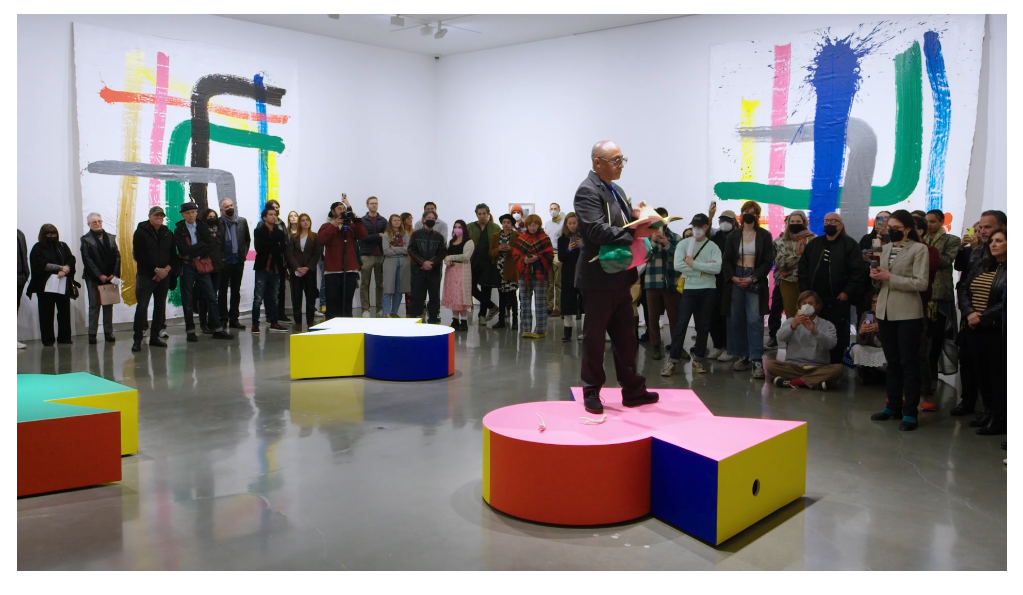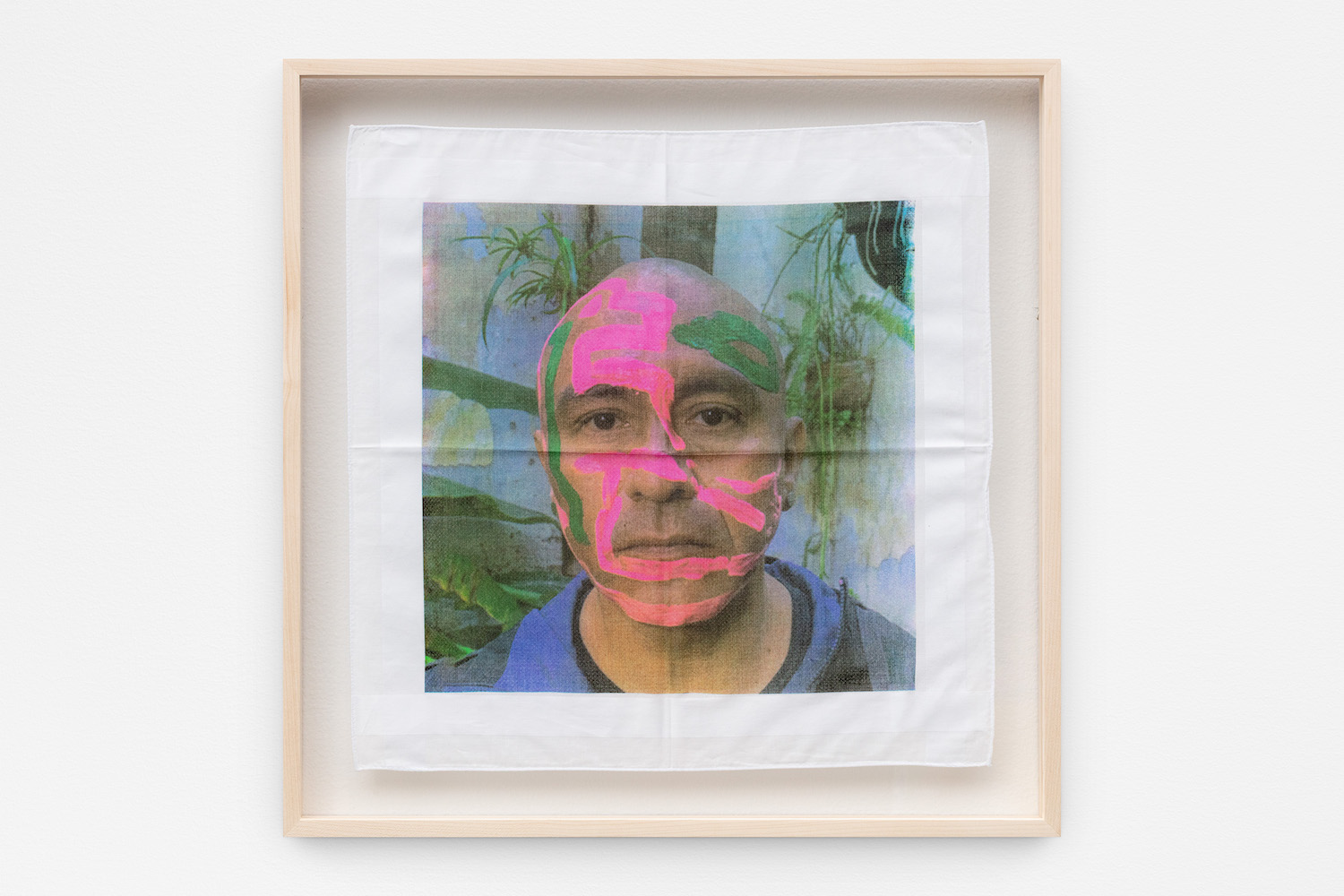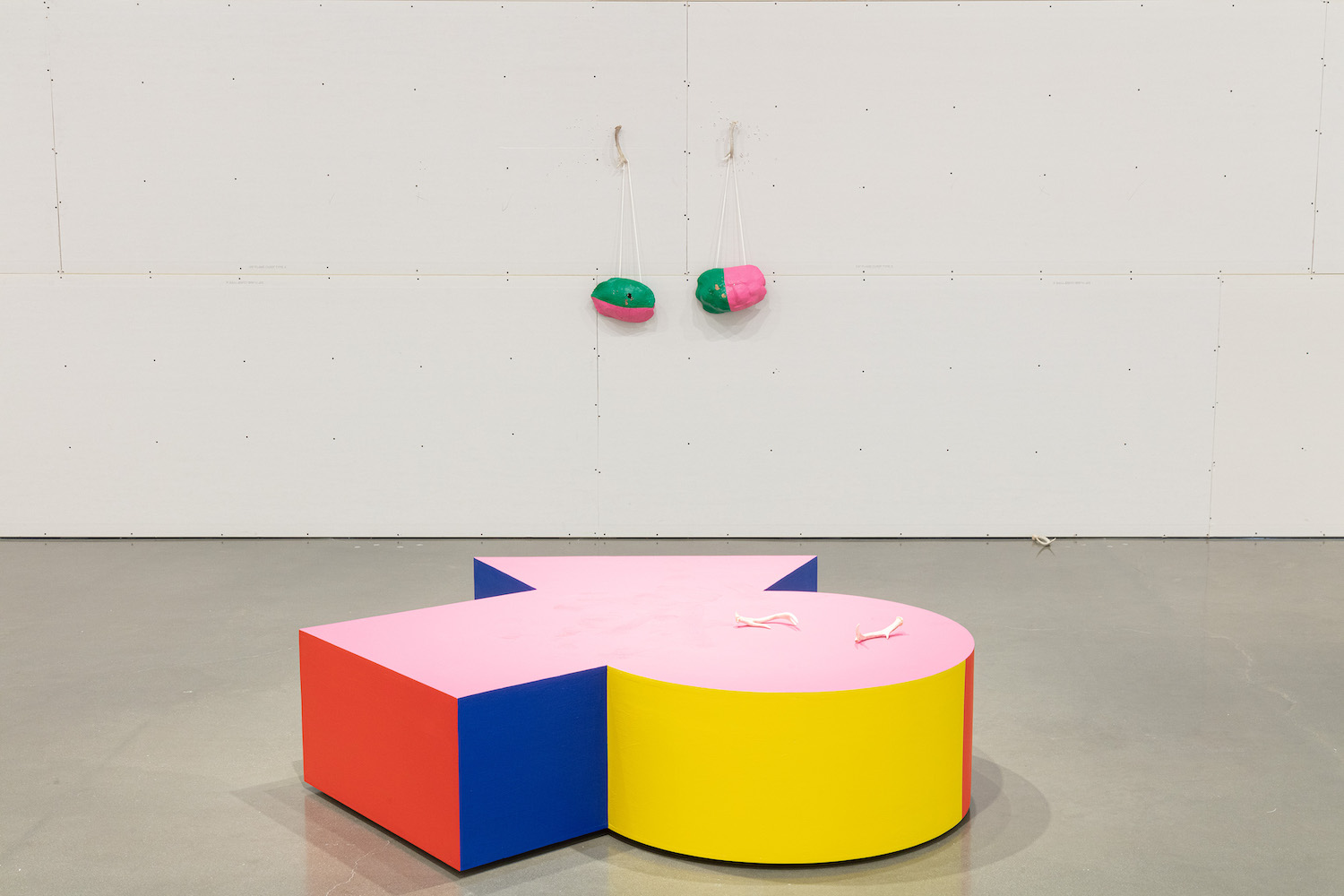Consider the rhythm of poetry, the speaking voice and the eye moving across the page, the mathematics of strict iambic and hendecasyllabic verse pressed into the service of unruly love and nature. The pace and structure of power of three is eternal, the optical advance and retreat of colors in complement and conflict keeps the eye in motion, and the organic beat of handmade drums moves the mind and the feet. The physical rhythm of the body engaged in labor, sweeping a mop across a gallery floor, wielding a mop as paintbrush to lay down wide, wavering routes of pure color — at some point, it will become necessary to confront the movement of capital and its role in the production of objects and the guiding of interests as ideas progress art history. All of this and more converges in Abraham Cruzvillegas’ remarkably forthright and elusive Tres Sonetos (Three Sonnets).

Abraham Cruzvillegas, Tres Sonetos Opening Performance (video still) at Regen Projects, Los Angeles, Saturday, March 5, 2022. Video courtesy of Regen Projects.
The exhibition was inaugurated with a performance by the artist involving painted shell-and-antler drums, their beats punctuated by poetry read from atop each of the three wooden stage sculptures, and finally the pounding of the antlers into the wall, from which the drums now hang. Those drums, the three fanciful wooden set-pieces, a series of three photographs of the artist in face paint and a trio of large-scale paintings are all connected by a specific, refined but eccentric palette of pink, green, yellow, gray, and blue. The sculptures and the paintings were executed on site at the gallery, and the paintings especially are assertive, almost boastful, in their display of the labors that generated them. In their appearance and the energy of their linear armatures they evoke Sol Lewitt’s wall drawings and in particular the line paintings he notoriously signed on the diagonal. Cruzvillegas shares this puckish taste for obscuring intentions and thwarting preciousness, undermining the logic of capital by forcing viewers and collectors into making choices about which way is up, puncturing the passive haze of consumption without responsibility.

Abraham Cruzvillegas, Camécuaro γ, 2022, Silkscreen on cotton handkerchief, Handkerchief dimensions:
18 x 18 inches. Image courtesy of Regen Projects. Photo by Evan Bedford.
The way Lewitt’s larger wall drawings were intended to be executed, often at a later date, by others whose job it would be, similarly to Cruzvillegas prioritized the idea over the special hand of the genius, separating the work of execution into its own category of action, thus highlighting labor and in this way further scuttling the capitalist fetish for the “original” or the rare. All of this is as appealing to Cruzvillegas as the dulcet pounding of lines of the Concha Urquiza poems that inspired the show and which were performed at its opening. She was Catholic and a communist, and her legacy was one of change and possibility nurtured in the heart of classical form. A perfect muse for this exercise in rhythm and meaning.
Abraham Cruzvillegas: Tres Sonetos
Regen Projects, Los Angeles
March 5 – April 23, 2022


